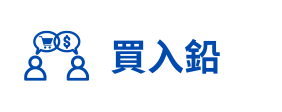What should I learn about blog writing for SEO?
Quick Answer: There are several points to blog writing that every writer needs to know. Understanding the basics of great blogging—evergreen content, when to publish, how to generate topics, how to set up for writing, and how to optimize your blogs—will help you enhance your content and boost your rankings. And, we go over each of these points here. We even cover how to refresh your old blog posts to keep gaining traffic!
Overview
Blog writing is a content marketing format that started as an online diary, and has since gained traction and found its way into business websites. It is one of the more accessible formats of content marketing, the strategic approach which aims to provide relevant and valuable information to one’s audiences and build a relationship with them.
According to OptinMonster, 77% of internet users read blogs. If you don’t know where to start and how, this comprehensive guide is for you.
How does blog writing help with SEO?
Think of it this way—when your target audience asks a question related to your niche, you would want to be the one answering the question, right? You can’t answer their questions when you don’t include a means in your website to answer them.
That’s what blog writing does for you
It gives relevant and useful answers to your target audience. And if you’re answering those questions well, the search engines have more reason to index your site and put you at the forefront of the SERPs.
Hence, according to Tech Jury, sites that produce blogs have 434% more indexed pages than sites that don’t. That means these sites generate more traffic, potentially generating more leads and revenue as well.
Companies that have blogs also get 97% more backlinks than other company websites, meaning they also get promoted through other people’s content because they took the time and energy to provide value and answer their target user’s questions
Why you should prioritize evergreen content
SEO-Hacker.com went live for the first Jamaica Business Email List time in April 2010—which means it’s been almost 12 years and I’m proud to say that we’re still going strong. Every year, our website traffic grows because most of our old articles are consistently generating us traffic as we produce more fresh content.
The secret behind this is age-old SEO advice: evergreen content. And even though publishing evergreen content is such a classic SEO and marketing strategy, I assure you that it works up to this day.
Don’t believe me? Check out the top 10 pages from January 10, 2021 to January 10, 2022 according to Google Analytics:
Google Analytics for Blog Writing
Most of the articles listed there were published a few years back and yet they are the ones that garner the most traffic even up to this date.
That is the power of evergreen content. It’s a strategy I’ve used for my own websites and I’ve used it to make our clients’ website successful as well.
What is evergreen content
Evergreen content is a piece of content about a topic that is still relevant even after a long time regardless of year, season, or trends. Compared to news articles and writing about trending topics, evergreen content will consistently bring your website traffic over time because there are people always searching about it.
Evergreen content is such a crucial SEO strategy because it keeps your audience engaged and gives your website continuity. It should definitely be the backbone of your SEO strategy as the gains are far greater than the costs.
What evergreen content brings to the table
Long-term gains
Think of evergreen content 買入鉛 like an investment. When you initially publish an article that is evergreen, you may not get traction immediately in your article. But as you rank higher, you would notice that traffic will increase slowly
If we compare evergreen content to news and other trending topics, you would see that as time goes by, evergreen content can still generate traffic while news and hot topics will fall off a lot faster.
Here’s an example. I wrote an article a few years ago about the easiest way to apply aggregate rating schema. Years later after its publishing, it is consistently getting traffic and is even my top article for the past year.
easiest way to apply aggregate schema
Let’s compare it to a news article I published two years ago. I wrote about Google’s announcement of the June 2019 algorithm update. After publishing the article, its traffic spiked up and immediately died down after a month.
June 2019 algorithm update
That is why it’s important to focus on evergreen content in blog writing. And as you add more evergreen content on your website, you will be able to see that your traffic increases and is on an upward trajectory.
Take note that while it does seem that publishing evergreen content is a far better use of your time than publishing news doesn’t mean you should put 100% of your focus on it. Writing about recent events and trending topics is a different strategy on its own and it does have benefits as well so make sure you have a good mix of both.
Attracts backlinks
As your content rank and get traffic, there is a high chance of it getting backlinks without you having to work too hard for it. Of course, when you publish an article, you would have to do a little link building to make it rank. But once it does and your content gains consistent traffic, you would notice that your article is getting backlinks without you proactively doing anything.
Check out the backlinks of my YouTube SEO article.
YouTube SEO backlinks
I published this article about seven years ago, did a little link building, was able to get on the first page, and there you go. Years later, it’s still getting backlinks on its own.
This is because people find my blog writing as a good resource and if they write an article about YouTube SEO as well, people usually link back to it. This can be applied in any niche. Since evergreen topics usually target high-volume keywords, ranking for them on the first page may let people see you as an authority which brings me to my next point…
Evergreen content is good for E-A-T
It goes without saying that as you get more backlinks, your website’s authority increases. But this isn’t just about PageRank, evergreen content is also great for E-A-T.
Google quality raters measure the E-A-T of a website using various criteria but the content of a website is definitely one of the main things that they check. If you publish evergreen content that is well-written and well-researched, it is a great sign of expertise, authority, and trust. It gives you more credibility and it is also great for your brand.
Sample evergreen content you may consider
How-to guides and tutorials
How to fix blue screen of death
How to properly clean your car
How to cook fried chicken
Informative articles
Best ways to lose weight
Money-saving tips
Resume writing tips
In-depth guides
Everything you need to know about blog writing
In-depth guide on dog training
Complete guide to link building
Important tip: Update your evergreen content
Although the content you published is evergreen, it doesn’t mean that new information is not going to be available in the future. That is why it is also important to go back to the evergreen content that you publish and update the information in them if applicable. It is also a good practice that when you update a piece of old content, your website should properly label it with the date it was last updated.
Reminder: Take note of the difficulty
One of the biggest hurdles in being successful with evergreen content is that topics and keywords tend to have high difficulty.
If you are just starting out, the best advice that I could give you is to stick to your niche and try to find low-hanging fruits. Regardless of the volume of traffic that it brings, as long as it is consistent, it’s already a win.
Do publish dates affect rankings?
Every day, millions of people are looking for fresh content on Google. For us SEOs, this means that when we publish content can be as important as what content we publish.
We’ve already tackled what kind of content we should be focusing on; now, let’s focus on the when.
Do dates on your blog posts affect rankings?
To simply answer the question, yes, publishing dates may affect rankings. When a user performs a search, Google will try to provide the most relevant and recent search results. These are especially true for news, recent events, and other trending topics.
Let’s say you Googled “best smartphone 2022.” It wouldn’t be right for Google to serve you a search result written in 2019 or 2018. Let’s look at the search results. The top stories for the keyword “best smartphone 2022” was published two days ago as of writing:
best smartphone 2022
The next couple of results were published five days ago and more. Some of these articles were published last December, but because they still answer my question, Google saw them to be relevant enough to put in the first page of the SERPs.
best smartphone 2022 SERPs
To further explain how dates affect rankings, Google released an algorithm update way back in 2011 called “Google Freshness Update.” The update aimed to improve Google’s algorithm called Query Deserves Freshness or “QDF” which identifies if a user is looking for up-to-date articles or not.
Now that Google improved its system of identifying if a user is searching for the most recent content, articles that talked about recent news and events were highly impacted by the time and dates they were published.
But what does this mean for months and year old content?
At that time, the algorithm update affected about 35% of search results according to Google. This means old content is still useful and relevant. Remember that Google will only serve a user content that was recently published if it is applicable to their query.
So let’s say you have a website that talks about cars. If you have articles about how to take care of cars that are well-written even though they were written several years ago, Google may still serve your content to users. That is why evergreen content, as mentioned earlier, is extremely important to your website.
Google’s guidelines on dates
Have you noticed that there are times Google shows the date an article was published in the search results and sometimes it doesn’t?
According to Google’s guidelines, Google will choose to show the publishing date of an article if it is useful for the user, especially for news. So how does Google find out when an article was published?
Google uses multiple ways. Here’s what they say on their guidelines:
“Google doesn’t depend on a single dating factor because all factors can be prone to issues. That’s why our systems look at several factors to determine our best estimate of when a page was published or significantly updated.”
How does Google identify publishing dates
The visible date on time on the page
There are two types of dates you can show on your articles: the exact publishing date or the date the article was last updated.
According to the guidelines, the dates should be clearly visible to the users and should be properly labeled such as:
Published: January 11, 2022




